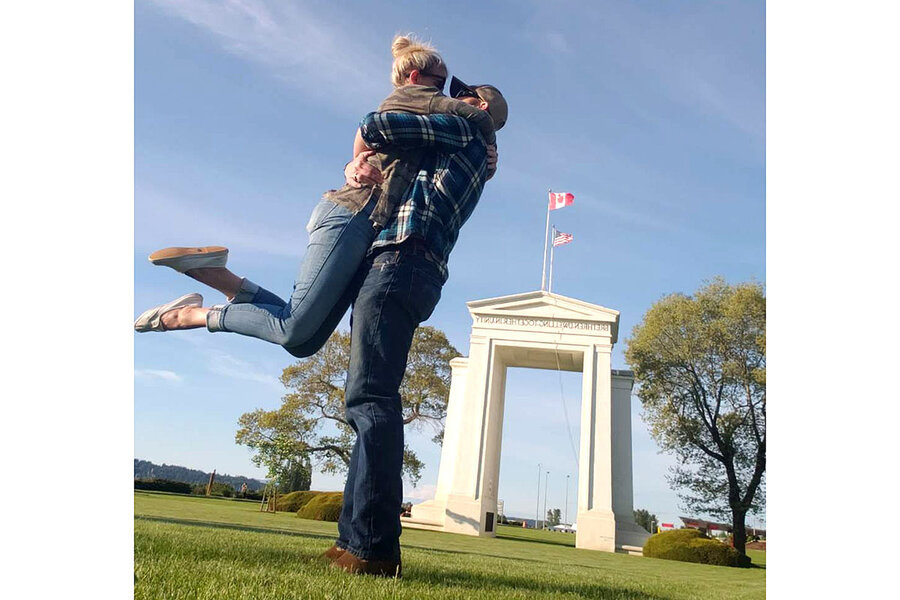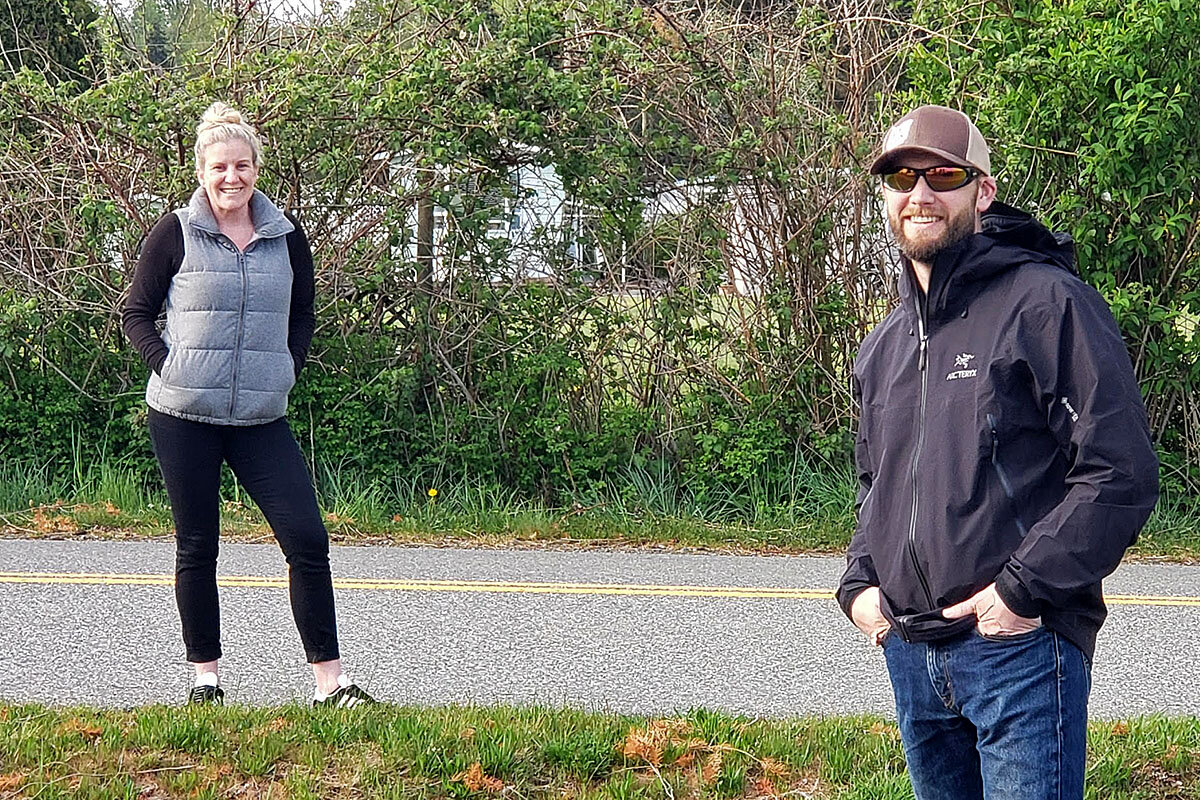‘Friendliest boundary in the world’ divides families in pandemic
Loading...
| Toronto
Jenn and Will Lathrop knew they were in for some long distance when they got married in the fall of 2018, until she, a Canadian, could get her green card and start life anew with her American husband.
But long distance is relative.
She lives 30 minutes from the U.S.-Canada border in British Columbia, he just 10 in Washington state. And on most days, getting through border patrol was no more than a five-minute affair. Their weekends were easily spent north or south.
Why We Wrote This
There are few borders in the world as open as that between the United States and Canada. Now, its closure amid the coronavirus pandemic is having a profound effect on binational families.
That was, until the border shuttered, at midnight on March 21, to all but essential and commercial traffic. It happened as international travel ground to a halt worldwide in an attempt to stop the coronavirus pandemic. (This month the closure was extended until at least June 21.)
But along the world’s largest undefended boundary, where notions of two open countries have persisted even after the strictures put in place after 9/11, the closure has felt even more baffling and unimaginable. Binational families have seen their American-Canadian lives suddenly divided in ways that make sense in government ministries but not in their own minds.
The Lathrops have only seen each other twice since it shut – the first time across a ditch where they were watched by U.S. border patrol agents and Royal Canadian Mounted Police (RCMP) telling families not to touch or share items. Mr. Lathrop likened it to what prison must feel like. “We were only inches apart, yet there is that barrier,” he says.
Editor’s note: As a public service, all our coronavirus coverage is free. No paywall.
The experience, says Len Saunders, the Lathrops’ immigration lawyer, whose office in Blaine, Washington, sits three blocks from the border, is something he would never have imagined “in my wildest dreams.”
The U.S.-Canada border, which spans 5,525 miles, is often called “the friendliest boundary in the world,” where Canadians dip south for milk or gas, and Americans vacation at their cottages north. A library in Quebec straddles the boundary with Vermont, a symbol of that friendship.
It’s been contentious at various points since it was first established in the 18th century. After 9/11, tensions flared after its porousness, usually defended as a point of trust between both countries, was criticized by American leaders who imposed new requirements. Today’s relatively seamless closure of nonessential traffic while trade continues, is owed in part to the work of shoring up bilateral institutions and relationships since then, says Theresa Cardinal Brown, director of immigration policy with the Bipartisan Policy Center in Washington, D.C.
“In the current situation,” she says, “where frankly the government of Canada and the government of the United States are not on the same page on a lot of issues, they're working together on this issue on the border.”
There has been friction today too. In March, President Donald Trump suggested sending troops to its northern border to prevent the spread of COVID-19 – something widely dismissed in Canada. If anything, where per capita rates of COVID-19 deaths and infection are much lower in Canada, the threat is perceived to come from the south. Premiers in provinces that share borders with the U.S., from Doug Ford in Ontario to John Horgan in British Columbia, have lobbied Canadian Prime Minister Justin Trudeau to keep the border sealed off for now.
That’s been devastating to some families though. Emma Holmes in Ottawa started a petition lobbying the Canadian government for family members to be reunited. It received 4,000 signatures in its first week alone, with personal stories of separation spilling across its pages, from those with health issues unable to care for family or fathers separated from babies or pregnant spouses trapped on the other side of the border.
Mark Belanger, a lawyer in Vancouver with the Border Solutions Law Group, says border agents aren’t consistently determining what is “essential” and what isn’t. He normally helps clients on work visas but says he has been increasingly fielding calls from those who have been denied entry to Canada and should not have been. “We're dealing with inconsistencies in adjudication,” he says.
Nor do decisions always seem to make sense on a personal level. As Mr. Lathrop puts it: “If they are going to let people go to tattoo parlors and weed shops, let families visit each other.”
Instead, the couple has to wait – and no one knows for how long. “We had anticipated that I would be receiving my green card in May or June this year. And then we were hoping to be able to start a family. But obviously that won’t happen,” says Ms. Lathrop. “I'm grateful that we’re both healthy right now in separate countries. But you never know what's going to happen in the next month. And the border could still be shut.”
She was talking right before they are about to meet for a second time – this time at Peace Arch Park, neutral territory where she was hoping to be able to sit on a park bench and at least hold hands. “Going back to elementary school here,” she jokes.
Instead, when they saw each other in mid-May, he swept her up in his arms. It’s the most unrestrained touch they’ve experienced in two months – and it’s the most they can expect for now.
Editor’s note: As a public service, all our coronavirus coverage is free. No paywall.







